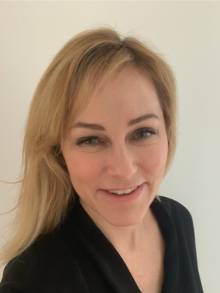Larissa Trinder
Executive Master of Public Administration-Public Service Leaders
-
2021

What led you to your current organization/role?
After completing my EMPA from Wagner I wanted to coordinate my passions, skills and education together in a way that would create the greatest impact on communities. The position I am currently in brought all of these things together. I was able to utilize my network at NYU to help make connections to my current organization and being able to advocate for the arts and healthcare in the same position fulfills my career goals.
How did your time at NYU Wagner help you further your career in public service?
The finance and leadership classes both really drove home the most important factors for a career in public service. You simply cannot have one without the other. NYU Wagner gave me fiscal confidence and greater understanding on how to review nonprofit work to determine the best path for maximum impact. The leadership classes helped to reinforce an empathetic and thoughtful examination of myself, which is particularly critical when you are managing others.
What about your work is most fulfilling to you?
Sharing experiences with people that uplifts them and makes their journey a bit more palpable, whatever they may be facing. Watching clinical teams dance to Jazz quartets, patients being exposed to beautiful and historically significant art from a diversity of artists and providing wellness programs to the entire H+H community is a privilege. In addition, developing policies to protect the art collection and establishing a framework to share it throughout our health system and to a larger community is all deeply fulfilling.
What public service impact do you hope to make through your organization and/or career?
In so many ways my position allows me to create impact. Because Health+Hospitals is the largest public healthcare organization in the country (arguably the world) we have an opportunity to reach a tremendous amount of people in marginalized classes, including undocumented immigrants, homeless populations, and the growing number of behavioral health cases. My department brings evidenced-based programs and visual art experiences to all 11 facilities and 70 clinics all over New York City. In addition, I hope to further develop a strategy for the art collection that not only cherishes its historical legacy for the health system and NYC, but provides access to the entire city through virtual tours, and additional collaborations with the multitude of cultural organizations that exist in NYC and the surrounding areas. Art in Medicine has a robust community mural program that has been very successful in creating clinical engagement with artists and the communities they work and live in–I hope to scale this program among others.